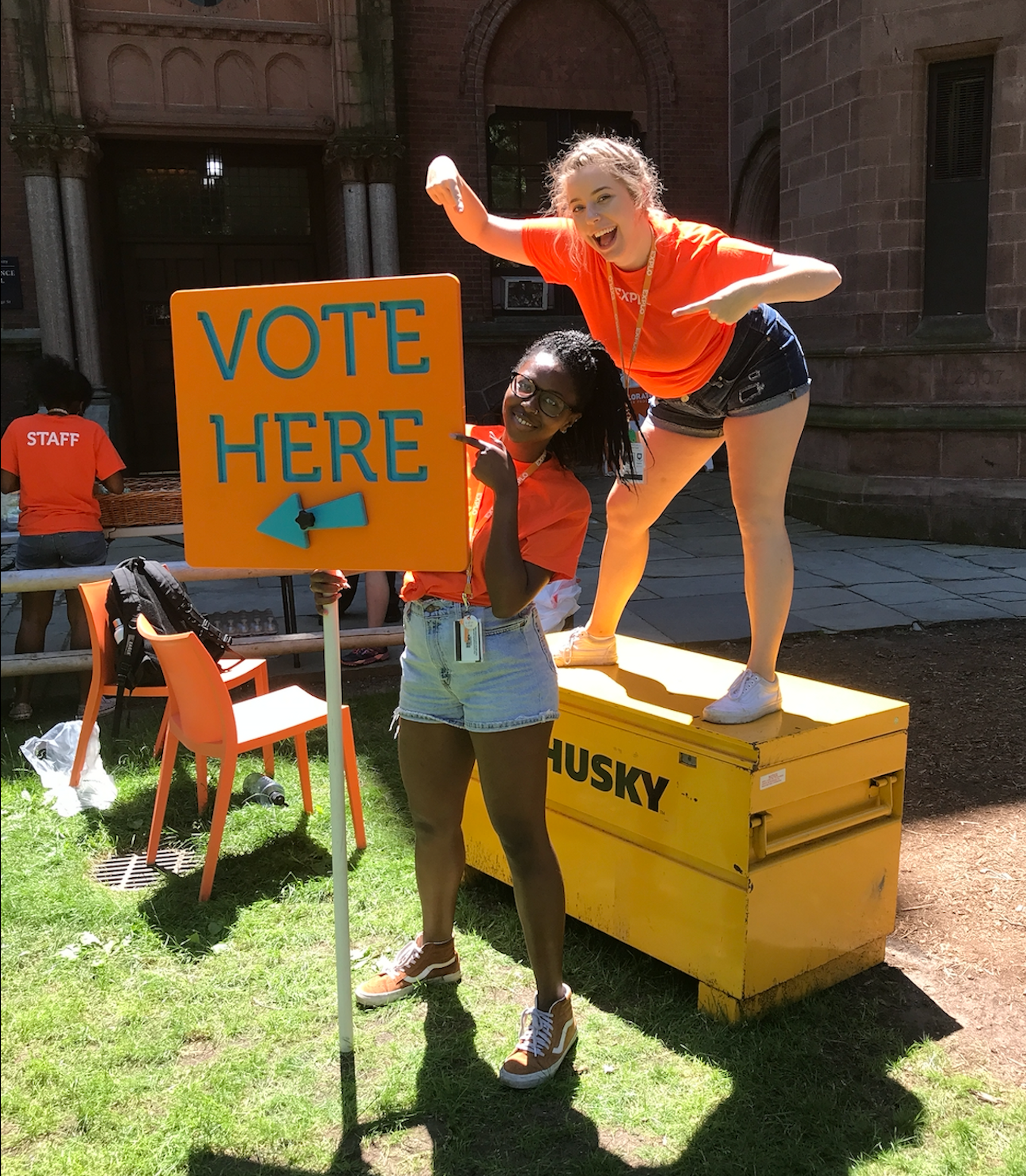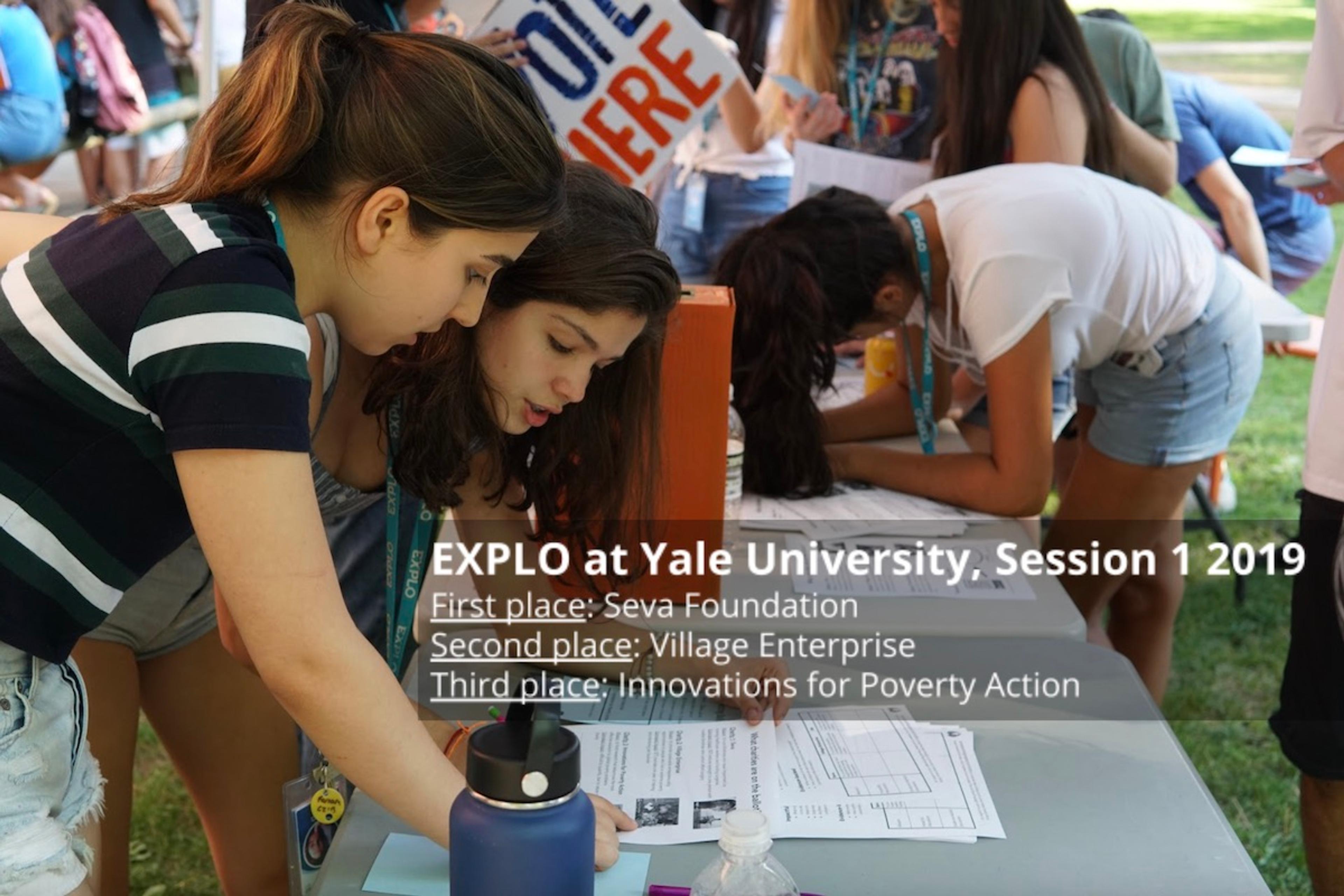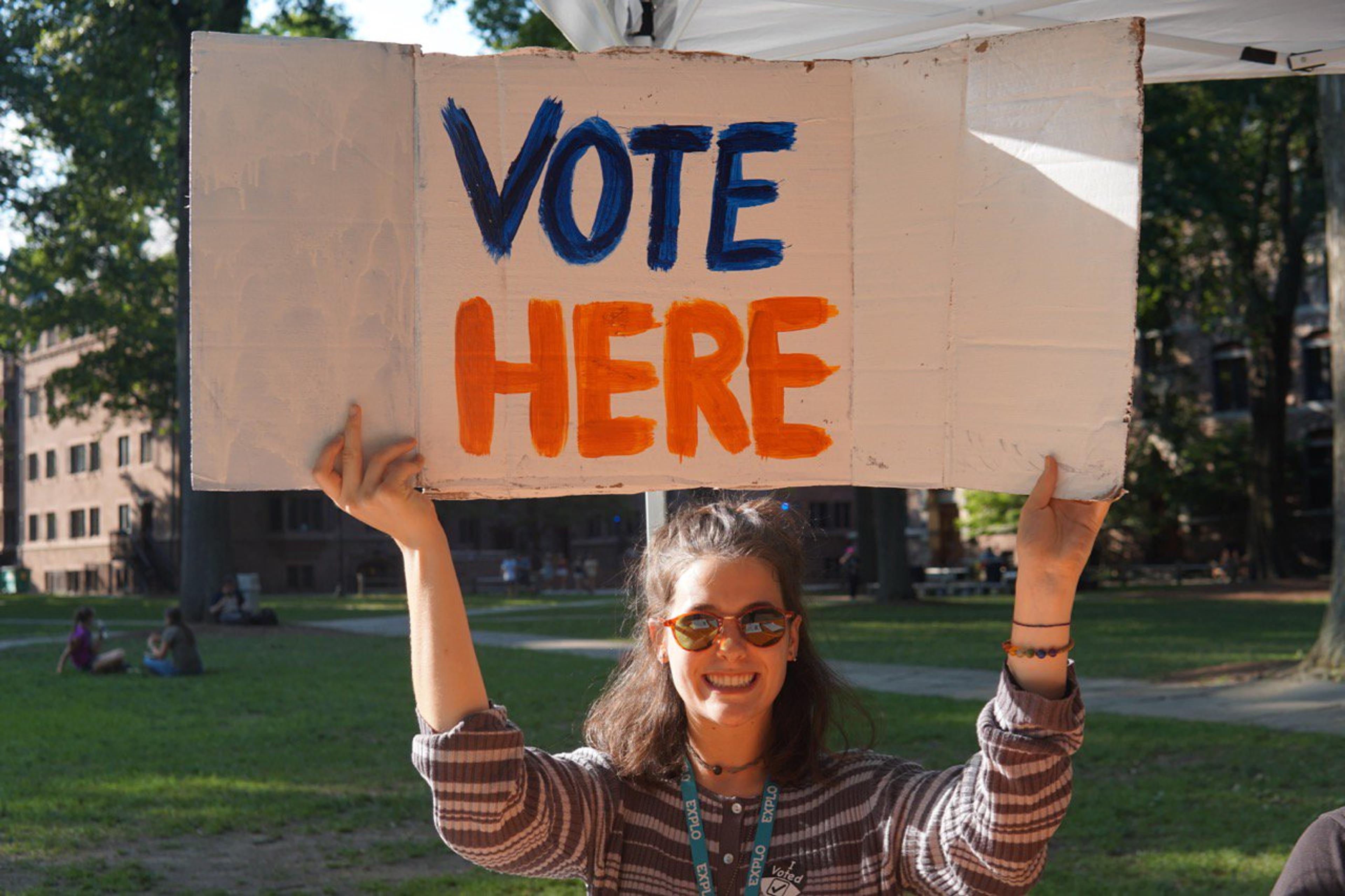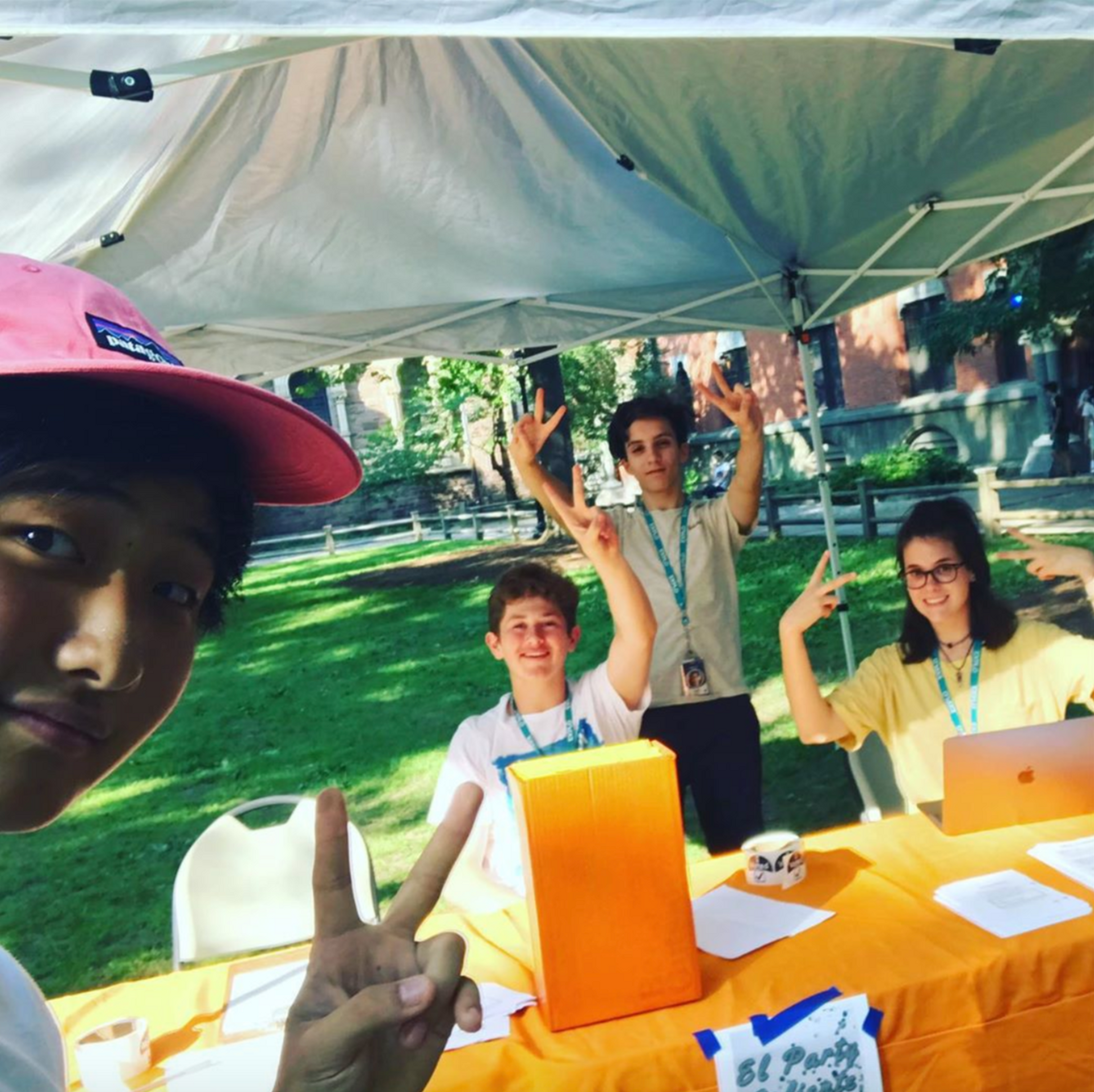Charity elections
Charity Elections is looking for a new fiscal sponsor! If you're interested, please read more here and get in touch with Greg Gianopoulos, and Adam Steinberg,.
In a charity election, high school students research, discuss, and reflect on three charities before voting to decide which will receive up to $2,000 in sponsored funds.
The programme was designed to inspire meaningful discussions and empower young people to reflect on complex world issues and realise their potential to make a difference. A self-contained slideshow allows teachers to easily run the event, either across a set of classes or the whole school.
The students decide
For each ballot submitted, Giving What We Can (GWWC) will donate $2 to the charities. This means that each individual ballot cast increases the total amount donated. GWWC will donate up to $2,000 (or its international equivalent) on behalf of your school.
To aid the student decision-making process, teachers are provided with an easily implemented framework for research and discussion around giving effectively. Students are empowered to use reason and evidence as tools for informed decision making, ultimately casting a vote grounded in critical thinking, empathy, and reflection on multiple points of view.
Designed by teachers to be easy to run
Sponsored schools are provided with a slideshow that facilitates discussion and voting. Minimal teacher preparation is required.
Typically presented by teachers of a particular department (e.g. social studies) during voting week, the slideshow leads the students towards an individual decision about their vote. Student leaders support the coordinating teacher by publicising the charities and promoting voting around the school.


Benefits for students, schools, and charities
- A voting experience that promotes youth voice and civic engagement
- Critical thinking about personal values and world issues
- Real money donated to highly effective charities
- Tangible impact that shows each vote makes a difference
- Discussion and reflection that empowers young people as changemakers and builds school community
All implementations of the programme are designed to promote empathy, compassion, and positive school climate.

School success stories
Northfield High School
MN, United States
- $1,748 of sponsored funds donated to charity
- 874 students (~70%) submitted ballots
- 95% of participating students said they made a difference for people in need
- 97% of participating students said they voted for a cause they believed in
Balcatta Senior High School
WA, Australia
- 303 students (~65%) submitted ballots
- Donation to winning charity can restore eyesight for ~9 people with curable blindness
- Seven student leaders received Service Leadership Certificates for their work and impact in the world
- Article published by students on impact of event
Learn more about student leaders Learn more about school successes
Charities on the ballot
The three charities on the ballot this year are the Against Malaria Foundation, The Humane League (Corporate Animal Welfare Campaigns), and the GiveWell All Grants Fund. A $50 donation to the Against Malaria Foundation, for instance, can deliver 10 bednets to protect those living in malaria-stricken areas from infected mosquitos.
The charities are selected for their effectiveness and to promote critical thinking, empathy, and meaningful conversations among high school students. All of the charities have been designated as highly effective by independent charity evaluators such as GiveWell and ACE, except for occasional cases such as when an independent charity evaluator itself is listed on the ballot. Students use the research and discussion process to determine which charity will receive their vote.
Read about our selection methodology here, and calculate the estimated impact of donations to highly effective charities using the The Life You Can Save’s Impact Calculator or GiveWell's Impact Calculator.
Links to further research on the charities are listed below. If you are a student researching the charities to decide where to vote, click here to download the research and discussion worksheet.
| Name | Links to research | Estimated impact: $50 donation |
|---|---|---|
| Against Malaria Foundation | Link 1, Link 2 | Can deliver 10 bednets to protect those living in malaria-stricken areas from infected mosquitos |
| The Humane League (Corporate Animal Welfare Campaigns) | Link 1, Link 2 | Can prevent 1 year of life in a cage for 450+ animals* |
| GiveWell All Grants Fund | Link 1, Link 2 | Can provide supplements to protect 25 children from vitamin A deficiency disorders** |
* This estimate is based on research from 2019. It is possible that the programme is not currently as cost-effective.
** This estimate is based on a GiveWell top charity. Since the GiveWell All Grants Fund has a higher expected value than the GiveWell Top Charities Fund, the estimate might be seen as an example and lower bound of what can be achieved through the All Grants Fund.


How the funding is allocated
Student leaders can choose among the following options:
- Winning charity receives 70% of the funds, second-place charity receives 20%, and third-place charity receives 10%.
- Winning charity receives 100% of the funds.
- Charities receive funds in proportion to the number of votes cast for each.
When to run a charity election
The default voting week is in early December, but schools can elect to run the event any time of the year if the Sponsorship Application is submitted at least one month prior to their school’s event.
Schools are selected on a rolling basis based on:
- The strength of responses on the application.
- The date of application submission (with a preference for early submissions).
Additional thoughts or questions
Check out our FAQ for more information, and send any additional questions about the event or application process to charityelections@givingwhatwecan.org. You can also follow us on LinkedIn for occasional updates posted by our team.
If you would like to support the project to help it reach more schools, you can make a donation here.

Anonymous student testimonials
"I wasn’t aware of these creative solutions to worldwide problems and am interested in investigating more charities."
"It makes me realize how interconnected we are and any positive impacts in one part of the world can echo globally."
"It opened my eyes on voting and giving for others. I believe these types of activities should be encouraged in a school setting and that everyone should be aware of global issues."
"It has helped me to put myself in other people’s shoes and change my perspective to see what others need."
“I feel inspired to help others in need after seeing the work these organisations are doing.”
“I love this. I normally don’t get to do things like these and I find this very fun and educational.”
"I never really looked further than giving money for a 'good cause.' It never crossed my mind really to look deeper into the charities. More research is better, know what you are supporting and where your money is really going to."
"It makes me proud that my school values charity and giving enough to support an organisation like this."
"It made me motivated to do more good in the world."
“Shows me that doing a small thing can be super impactful (just one vote counts).”
